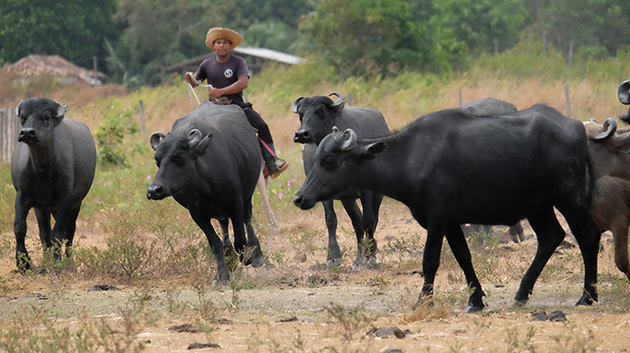THE Northern economy it is based on plant and mineral extraction.
It is one of the least industrialized regions in the country, however it is the richest in terms of natural biodiversity, due to the Amazon Forest.
States and Capitals of the North Region
| States | capitals |
|---|---|
| Acre | White River |
| Amapá | Macapa |
| Amazon | Manaus |
| For | Bethlehem |
| Rondônia | Porto Velho |
| Roraima | Good view |
| Tocantins | palms |
Economy: economic activities and products
The most economically developed states in the region are Amazonas and Pará. However, each state stands out in the extraction and processing of some product.
See the illustration below:

Mineral and Vegetable Extractivism
The main economic activity in the North region is mineral and plant extraction.
The state of Pará is an important exporter of minerals such as manganese and iron and is the largest producer of logs, according to the IBGE.
The Amazon Region is also responsible for the national production of Brazil nuts, latex (taken from the rubber tree), babaçu, açaí, and cupuaçu. These are manufactured by the food, pharmaceutical and even fuel industries.
Industry
To reduce regional inequalities, the military government created, in 1967, the Manaus Free Zone, with the aim of stimulating the industrialization of the region.
In 2017, Amazonas accounted for 3% of the country's industry. The manufacture of machinery and equipment, for example, grew 31.6% in 2017; the production of electronic products and information technology materials increased 23.9%.
Livestock

Cattle are raised extensively in the North region, especially for slaughter.
Likewise, the island of Marajó concentrates the largest herd of buffaloes in Brazil. There are 600,000 animals that provide meat and milk to the local population, in addition to being the registered trademark of the largest maritime-fluvial island in the world.
Agriculture
Agriculture in the North region is mainly aimed at subsistence with plantations of cassava, beans and corn.
However, there are points of commercial agriculture, where foods such as black pepper, coffee, jute, passion fruit and coconut are grown.
One of the cultures that advance on the Amazon rainforest is soy and this has caused a lot of concern to environmentalists for the damage caused to the local ecosystem.
Tourism
The North region, especially the states of Amazonas and Pará, attract tourists who want to get to know the Amazon Forest and the river up close.
There are also regional festivals such as the Festival of Parintins (AM), the Amazonas Opera Festival (AM) and the Festa do Círio de Nazaré (PA) that bring together thousands of people from all over the country and the world.
Curiosities
- In the 80s, the northern region hosted Serra Pelada, the largest open pit gold mine in the world.
- In the state of Acre, the extraction of latex from rubber plantations is still an important activity and the union leader Chico Mendes he became known around the world for his fight for better living conditions for rubber tappers.
Read more:
- North region
- Northern Culture
- Northern States
- North Region Climate
- Southeast Region Economy
- Northeast Region Economy
- Southern Economy
